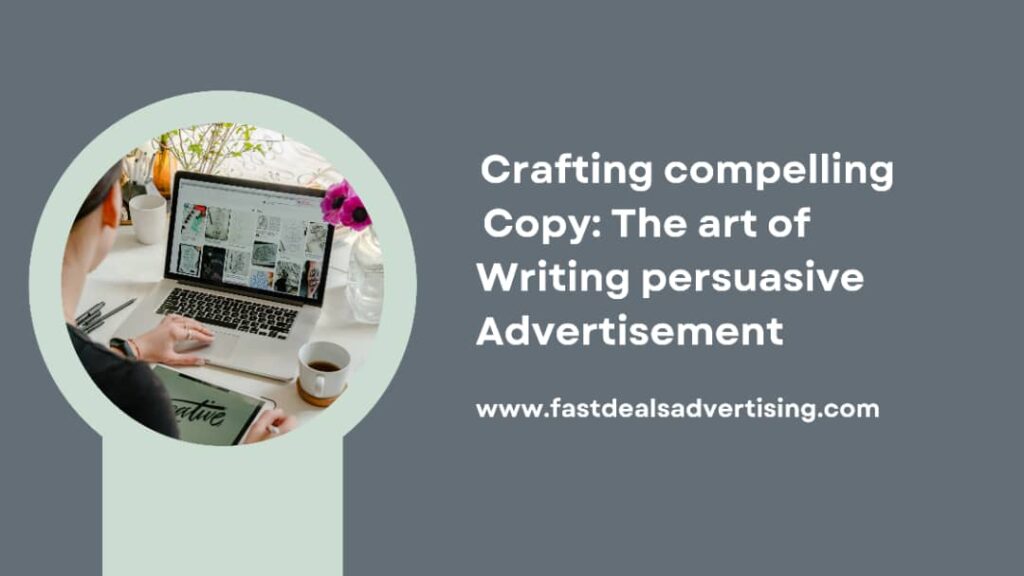
Welcome to a world of competitive advertising, where mastering the art of writing compelling and persuasive ad copy is crucial for drawing the attention of your audience and making them take a particular action. Whether you’re writing copies for print, social media, or digital platforms, knowing how to craft a compelling copy can lead to the success of your advertisement. This article will give you a glimpse of what persuasive advertising is all about and key strategies for writing persuasive Ad copy.
Content:
What is persuasive advertising?
Key Elements of Persuasive Advertising
What is Persuasive Advertising?
Persuasive advertising is a type of communication written with the intention of influencing the behavior, attitudes, or decisions of your target audience. The main purpose of persuasive advertising is to convince your audience to take a particular action, either to buy a product, click on links, book a call, or schedule a meeting.
Key Elements Of Persuasive Advertising
Below are the important elements to consider when writing compelling, persuasive ad copy.
1 Research and know Your audience.
Before you dive into writing an advertisement copy, it is important to research and understand your target audience. Know their preferences, interests, needs, and pain points. Make sure your copy resonates with their emotions and shows them how your products and services can solve their problems.
2. Create a Catchy Headline.
Your headline is the first thing your target audience sees, so make it catchy. Write a compelling headline that draws attention, evokes curiosity, and highlights the benefits you’re offering.
3. Focus on Benefits, Not Features.
Instead of focusing on the features of your products, focus on the benefits. Clearly highlight how the benefits will improve the lives of your audience.
4. Use Persuasive Language.
Use words that arouse emotions and create a sense of urgency. For example, words like ending soon, limited offer, exclusive, or limited slot available can help drive action.
5. Tell a Story.
The art of storytelling has been recognized as the most persuasive way to grab audience attention. People want to hear the success stories, testimonials, and grace-to-grace stories of using your products or services. Storytelling creates trust and emotional bonds.
6. Address Objections.
Address any relevant objections your audience may have. Answer questions that might be of concern to them and state your offering as the best solution. By doing so, it builds credibility and eliminates resistance to taking action.
7. Create a Clear Call to Action (CTA).
One of the biggest mistakes writers make when crafting an ad copy is stating too many CTAs. Create a single clear call to action, either to buy a product, book a call, or click on a link.
8. Spark Curiosity.
Your ad copy should spark curiosity in the minds of your audience.
9. Clarity.
A persuasive advertisement copy should be clear. Avoid using ambiguous words. Write in a lay man’s understanding.
Conclusion
Crafting compelling and persuasive advertising copy is a continuous process that requires steady refinement. Remember to do research on your target audience, focus on benefits, use persuasive words, etc. to ensure your advertisement delivers a compelling message that drives results.
Contact FastDealsAdvertising (WhatsApp Only): +971 56 448 7617.
